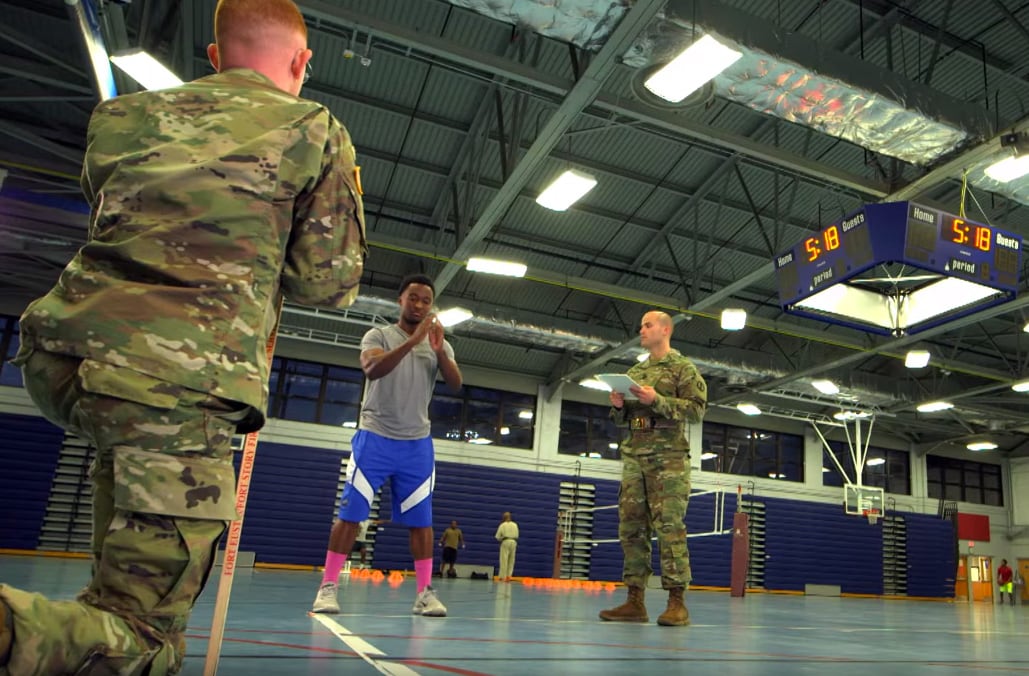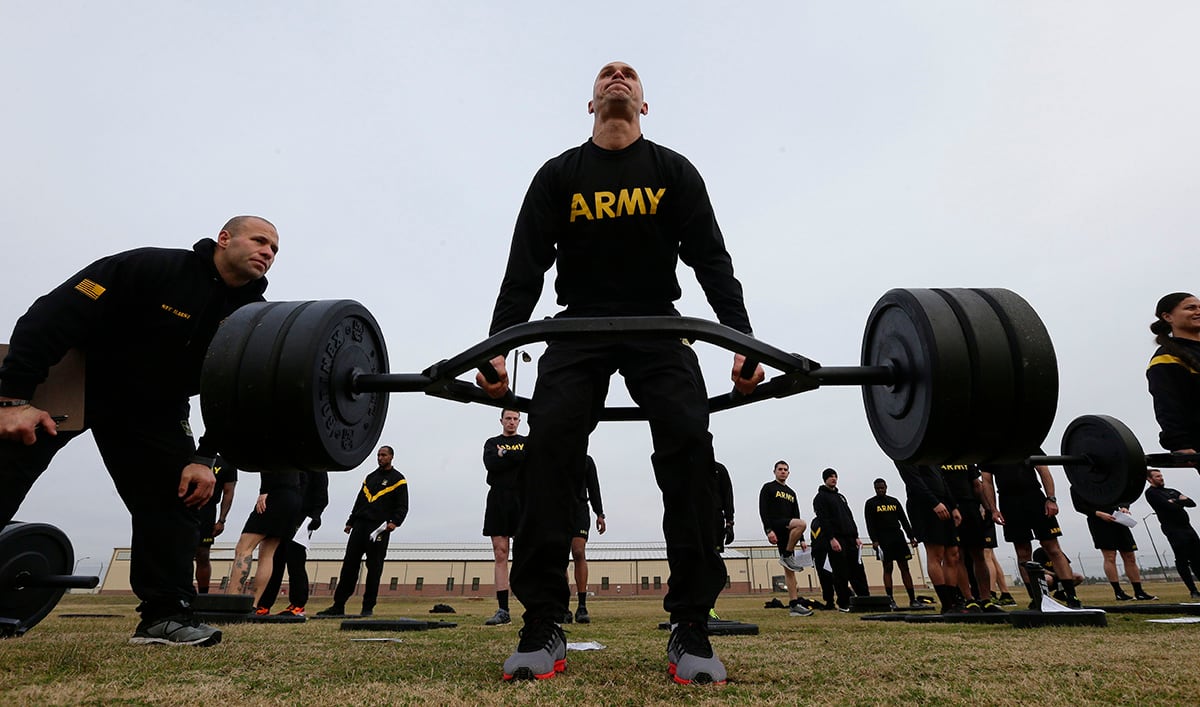It was early 2017 when a one-station unit training battalion commander at Fort Benning, Georgia, noticed one of his soldiers looked weak.
There was an easy check: If he could dead lift at least 160 pounds, he would meet the infantry standard for the Occupational Physical Assessment Test, a four-event battery the Army implemented at the beginning of that year.
He could not.

“The [battalion] commander asked the trainee if he had ever taken the OPAT, and the trainee stated he had not,” according to an investigation, provided to Army Times via Freedom of Information Act request, which wrapped up in 2018 after all involved had been disciplined.
The command got to work asking every single trainee who’d shown up at Fort Benning since Dec. 27, 2016 ― the first rotation that should have taken the OPAT prior ― whether they had in fact passed the test.
“Numerous” said they hadn’t, according to the investigation.
That month, Fort Benning found more than 200 of its current trainees had not passed an OPAT, either because they hadn’t taken it, they hadn’t done all four events or they’d failed it.
In total, Army Recruiting Command found 318 soldiers, 305 male and 13 female, claiming they had enlisted after failing the OPAT, or never having taken it altogether.
The issue touched 36 out of the Army’s 38 recruiting battalions ― only New York City and Richmond, Virginia were clear ― and involved 297 recruiters.
Of those, 228 allegations were substantiated, according to USAREC spokeswomen Lisa Ferguson.
“Appropriate action was taken in each case, to include adverse administrative action on many of the cases,” she told Army Times on Wednesday.
Dallas was the worst offender ― with 38 untested recruits ― followed by Atlanta, Raleigh, North Carolina, Houston, Oklahoma City, Montgomery, Alabama and Columbia, South Carolina.
Of the untested recruits, 98 recruits had gone into general infantry, 25 into infantry fire support, 26 into cavalry scout and six into Special Forces ― four of the military occupational specialties requiring the highest levels of fitness.
But not everyone was looking for a direct combat job. There were three who went into human resources, and two more from food service, as well as others who would have only needed to meet the “moderate” standard.
Regardless, they were all able to stay.
“Training brigade commanders determined those soldiers who had not taken the OPAT prior to basic combat training/one-station unit training would continue training,” Army Training and Doctrine Command spokeswoman Megan Reed told Army Times.
Sworn statements were redacted from the investigation, but the officer in charge of it wrote that not every one of those noncommissioned officers appeared to have ill intentions.
“Despite being trained, many recruiters did not fully grasp how to administer the OPAT or the significance of the testing requirement,” the investigating officer wrote, and so either didn’t give the test, or let recruits ship if they’d failed it.
But why?
A misunderstanding on how to administer it was part of the problem. There was to be one administrator and one grader for the test, per regulation, but recruiters who gave statements said that they were giving the test themselves to multiple recruits, with no grader, and then sending off their scores without getting them validated by their leadership.
“Many recruiters perceived that they were under pressure by the mission increase and the requirement to fill training seats during a historically low period of accessions into the Army to ship recruits as quickly as possible,” according to the report.
At the time, the Army was in the midst of a grueling recruitment year: To help the service reach its 476,000 active-duty end strength goal in 2017, the recruiting mission jumped from 62,000 to 68,000, after President Obama signed that year’s National Defense Authorization Act right before Christmas ― three months into the fiscal year.
RELATED

A week later, the OPAT came online, and recruiters had to add it to their process to get recruits ready to ship.
Most of the recruiters implicated in the investigation knew the requirements and had the resources to administer the tests, the report found ― “However, they consciously decided not to comply with the standard.”
They figured the recruits would sort out their fitness levels at basic, the way they had been for decades, the investigator wrote. Until OPAT came online, there was no specific fitness test to determine whether a recruit was in good enough shape to do a specific job in the Army.
But its implementation coincided with the Army opening its last men-only occupational specialties, not only creating a gender-neutral standard for any Army job, but encouraging recruits to train to the requirements before they enlist.
“The recruiters thought it would not be an issue once the future soldiers got to basic training, nor did they believe they would be punished for their non-compliance,” the investigator wrote.
Though the investigation took several months, USAREC changed procedures in May 2017, to keep it from continuing to happen as they were still working to understand the scope of the issue.
They added three new requirements: Recruits must now sign their OPAT score cards, recruiting centers must designate someone to review score cards, and a guidance counselor has to validate both the recruit’s signature and the recruiter’s for anything suspicious.
“USAREC expects its nearly 10,000 recruiters stationed around the world to serve as respected representatives of the U.S. Army and follow all policies and regulations when accessing future soldiers to serve our country,” Ferguson said. “Any allegations of recruiter misconduct will be promptly investigated and appropriate action will be taken.”
Meghann Myers is the Pentagon bureau chief at Military Times. She covers operations, policy, personnel, leadership and other issues affecting service members.





